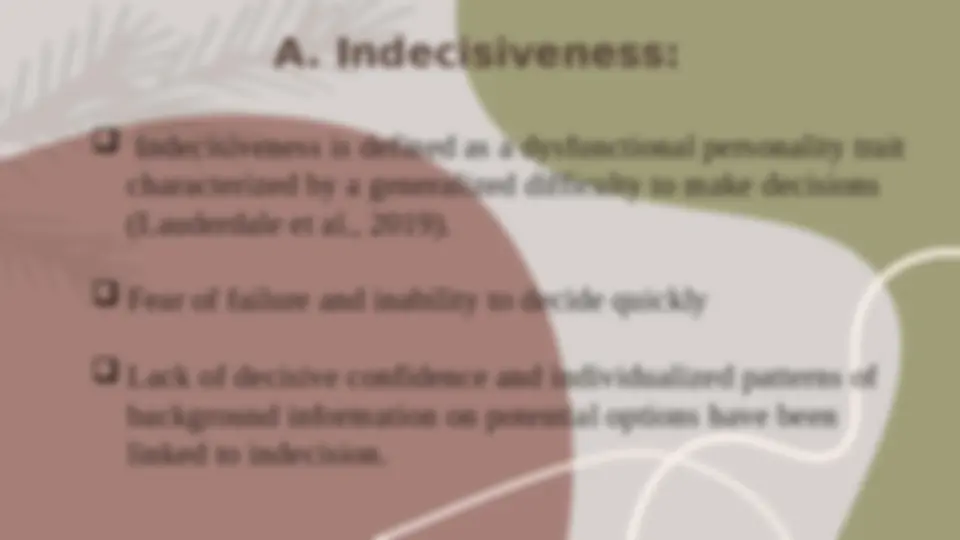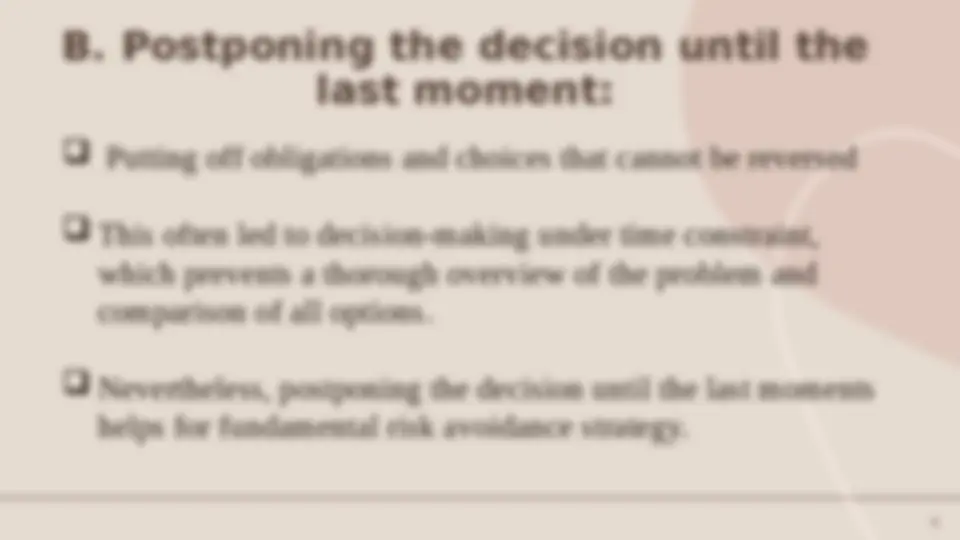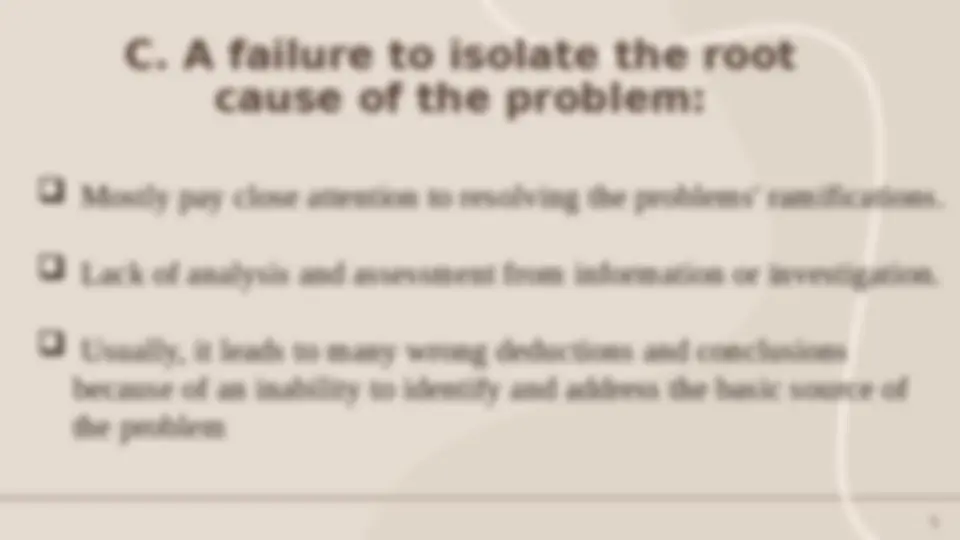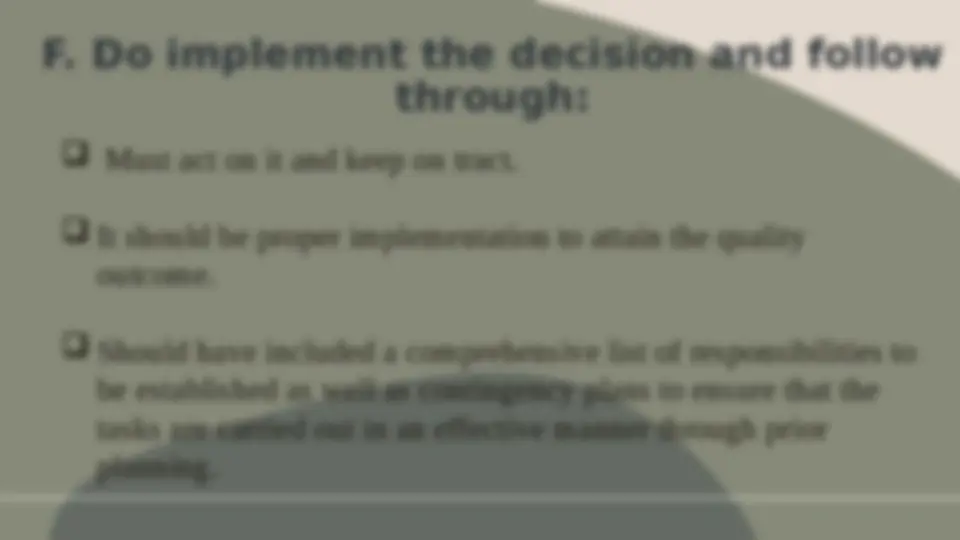







Study with the several resources on Docsity

Earn points by helping other students or get them with a premium plan


Prepare for your exams
Study with the several resources on Docsity

Earn points to download
Earn points by helping other students or get them with a premium plan
Community
Ask the community for help and clear up your study doubts
Discover the best universities in your country according to Docsity users
Free resources
Download our free guides on studying techniques, anxiety management strategies, and thesis advice from Docsity tutors
Common errors in decision-making, including indecisiveness, postponing decisions, failing to assess the root cause of problems, and evaluating unreliable sources. It also emphasizes the importance of using sound methods for analyzing information and implementing decisions effectively.
Typology: Cheat Sheet
1 / 9

This page cannot be seen from the preview
Don't miss anything!






A. Indecisiveness B. Postponing the decision until the last moment c. A failure to isolate the root cause of the problem D. A failure to assess the reliability of informational sources E. The method for analyzing the information may not be the sound one F. Do implement the decision and follow through
4 (^) Putting off obligations and choices that cannot be reversed (^) This often led to decision-making under time constraint, which prevents a thorough overview of the problem and comparison of all options. (^) Nevertheless, postponing the decision until the last moments helps for fundamental risk avoidance strategy.
5 (^) Mostly pay close attention to resolving the problems' ramifications. (^) Lack of analysis and assessment from information or investigation. Usually, it leads to many wrong deductions and conclusions because of an inability to identify and address the basic source of the problem
(^) Lots of information cannot be objectively assessed at once because of operational constraints. (^) Effective and trustworthy methods must be used to single out and narrow in on the relevant data. (^) Decision makers need a model that manages multiple variables thus, it will standardize the procedure to ensure that no steps are skipped, and no viable options are overlooked.
(^) Must act on it and keep on tract. (^) It should be proper implementation to attain the quality outcome. (^) Should have included a comprehensive list of responsibilities to be established as well as contingency plans to ensure that the tasks are carried out in an effective manner through prior planning.